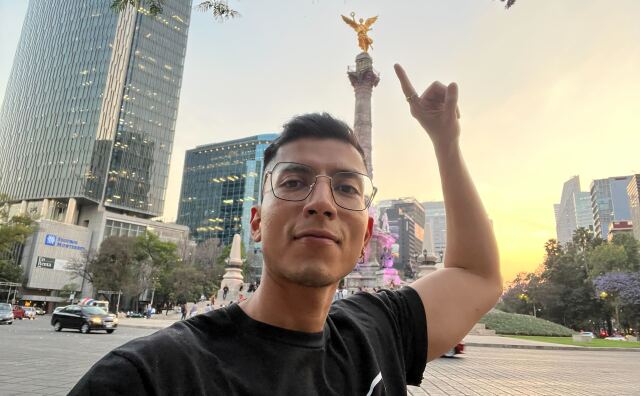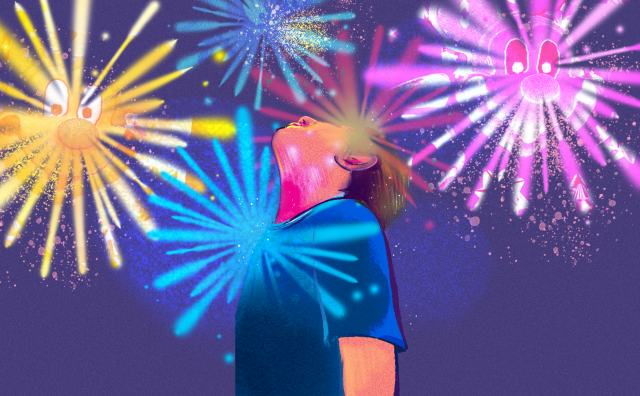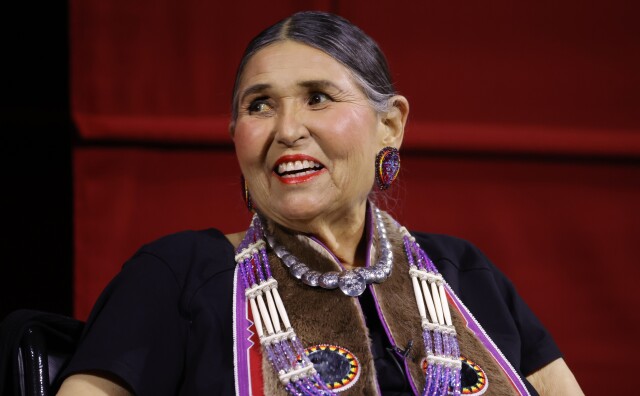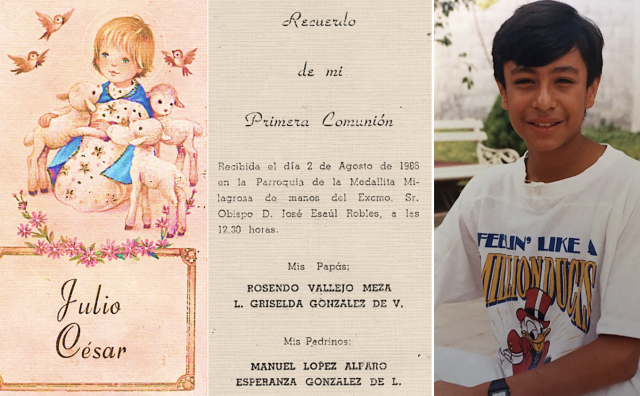The Struggles And Triumphs Of Growing Up Brown And Gay In LA

It’s the early 2010s in L.A. and I’m still learning who I am.
I barely know how to put an outfit together to go out to gay bars, but I cannot flake on my friends. At this point, I am a so-called baby gay. An all-black fit — a simple tee and dark jeans — is what I choose after my friend warns me, “Don’t bring dressy slacks again, Brian!”
I pull up to the parking lot of Circus Disco, a nightclub on Santa Monica Boulevard in Hollywood. (Since then, it has been replaced by a fancy multi-use apartment building *eye roll.) It’s a hassle to just find a parking spot, but I manage to get out and begin the trek to the entrance of the booming place.
I first danced perreo at Circus Disco to an Ivy Queen track! They later played Britney. The dance floor was for everyone. Gay cholos? Men who look like my tíos? Amigas walking, spilling beverages from their tall cans. Whoa — mind blown.
This was part of my growing up Brown and gay in L.A.
A Space Where We Could Be Ourselves
When I spoke to my homie Anthony Ocampo, an author and sociologist, earlier this summer, we both laughed about our moments at Circus Disco and all the other L.A. spots that brought us closer to our queer community.
We knew that the world hated us, but in this space we could be fully ourselves.
“We knew that the world hated us, but in this space we could be fully ourselves,” Anthony reflected.
I am writing about all of this now because Anthony has a new memoir out, perfectly titled Brown and Gay in LA: The Lives of Immigrant Sons. I connected with all of it.

Anthony and I are both millennials from L.A., with immigrant parents (I’m actually an immigrant myself) who discovered what it was to be a queer person of color in our 20s.
Growing up, most of the entertainment and media that depicted LBGTQ+ folks were whitewashed or used overly flamboyant stereotypes that didn’t necessarily represent us. (Shoutout to Noah’s Arc, which I later discovered.) It was confusing; is this the only path I can take as a gay dude?
The characters on Filipino shows “were always seen as comic relief,” Anthony remembered. “They were part of the family, but they weren't really part of the family in the sense that they couldn't live their own lives. They were just there for accessories.”
So, places like these bars allowed us to be ourselves and join our community on the dance floor without shame. And learn about the diversity of our people.
These moments were sacred — twirling, laughing with our girls was our church service.
“You could play with identities, queen out from the moment you get outta the car. It almost felt that spiritual to be there,” Anthony says.
Disruption: Dating Apps, Changing Spaces
But, of course, things began to change.
The economy was recuperating after the blow from the 2008 housing and financial crisis. Folks began to move and those spaces that meant so much to the LGBTQ+ community started to disappear. Circus Disco, which had been open in some shape or form since 1974, was sold to make way for a multi-use building. Arena, a nightclub next door, also was demolished. This is just one tale of a historic place that catered to queer people of color, but it signaled the pricing out of communities all across L.A.
I have to note that queer women and femmes have been robbed of their spaces, too, as West Hollywood and downtown L.A. bars mostly cater to men. Recently, my friend Janay Tate, a queer Black woman, told me, “As women, we’re a second thought and as queer women we’re the fourth, fifth thought.”
Technology is great, but it also brought people together online — and apart. As hook-up and dating apps like Grindr and Jack’d became mainstays of the gay (male) community, these spaces like Circus Disco became less necessary.
“It almost feels like, oh, if you can hit up someone on your phone and meet 'em locally, then there's not so much of an urgent need to go to the clubs,” Anthony says.
About Being Brown And Gay In LA
But WE make these spaces, not buildings or apps.
I feel like that’s the experience of being Brown and gay in L.A. IS creating space.

And Anthony is the type of person who is always trying to create space for other people. That’s what he does in academia, when he hosts a party with his friends at his house, and it’s what he’s doing with his new memoir.
Throughout the book he interviews people about that exact experience of growing up gay …and Brown… in this city.
He writes about the joy of discovering oneself but also about the hard journey it is to get there; the challenge of feeling like you don’t fit in or that you are disappointing your parents because you are not who they want you to be.
One of the folks he talked to shared that when they came out, their parents dropped them off in Mexico, took away their ID and told them they needed to work on their sexuality. Anthony notes that many people had horrible, homophobic experiences.
Things have changed for the better since. But Anthony says, “I wanted to write a book that reminded people of what these young men experienced. Not that I wanted to harp on the trauma, but I wanted folks to remember that even if we have same-sex marriage, it doesn't erase the fact that gay folks experience trauma.”
Those triumphs are real too; those nights on the dance floor or hanging in a kitchen — with pure community.
Visit our How To LA page to listen this conversation and others.
Julia Barajas contributed reporting for this story.
-
We’re here to help curious Angelenos connect with others, discover the new, navigate the confusing, and even drive some change along the way. Host Brian De Los Santos brings you stories about L.A., for L.A., by L.A. — with your help. Like you, we know this city is unique, and that’s why it’s one of the reasons we love it.
-
My good friend used advance parole to leave the country and return. Now it's my turn to go back "home."
-
When you grow up in Anaheim close enough to watch Disneyland fireworks every night while your family can’t afford to go, you can’t help but feel like you’re on the outside looking in.
-
She sat down with us in April, nearly 50 years after the night she turned down Marlon Brando's Best Actor Oscar — which is still among the most memorable and contentious in Academy Awards history.
-
Latin America is no stranger to racism and colorism — just turn on a telenovela and see for yourself. And it’s alive and well in our own communities here in the U.S.
-
When you grow up identifying as "half white and half Mexican," the task of choosing what box to check on a government form isn't easy.
-
Growing up as the son of a Filipino immigrant dad and Russian American mom, Mark Moya felt equally attached to both cultures. He still does. Lately, he's been thinking more about their immigrant legacy and how it shaped him, especially after losing his dad earlier this year to COVID-19.











